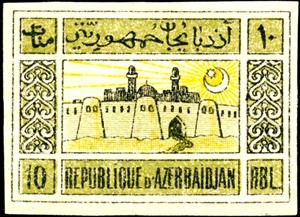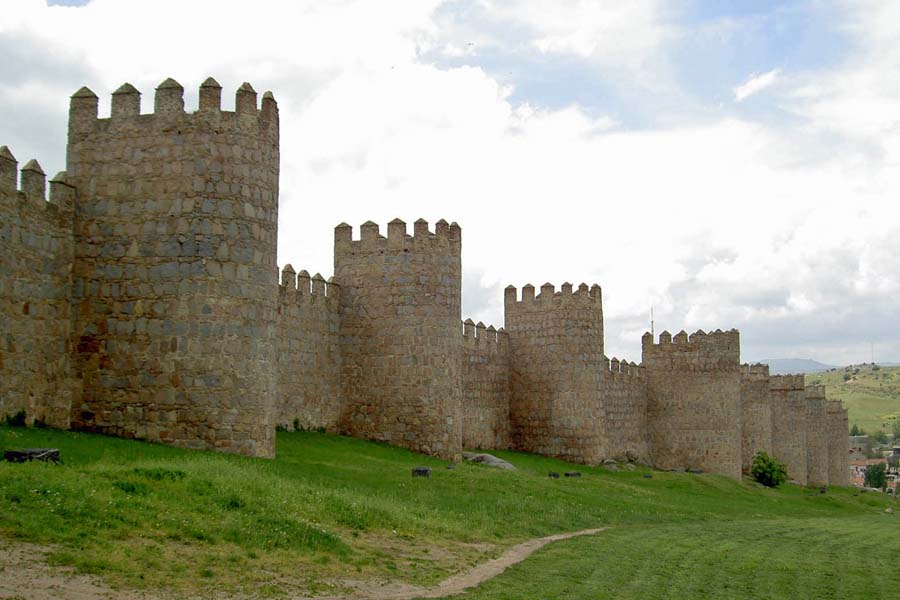Stamp: Palace of Shirvanshah, Baku (Azerbaijan 1920)
Palace of Shirvanshah, Baku (Azerbaijan 1920)
01 January (Azerbaijan ) within release National Symbols goes into circulation Stamp Palace of Shirvanshah, Baku face value 10 Russian ruble
| Stamp Palace of Shirvanshah, Baku in catalogues | |
|---|---|
| Michel: | Mi:AZ 8y |
| Stanley Gibbons: | Sg:AZ 8b |
Stamp is horizontal format.
Also in the issue National Symbols:
- Stamp - Flagmen face value 20;
- Stamp - Flagmen face value 10;
- Stamp - Farmer, sunrise face value 40;
- Stamp - Farmer, sunrise face value 60;
- Stamp - Palace of Shirvanshah, Baku face value 2;
- Stamp - Palace of Shirvanshah, Baku face value 5;
- Stamp - Temple in Surachany face value 25;
- Stamp - Farmer, sunrise face value 1;
- Stamp - Palace of Shirvanshah, Baku face value 10;
- Stamp - Temple in Surachany face value 50;
Stamp Palace of Shirvanshah, Baku it reflects the thematic directions:
A castle (from Latin: castellum) is a type of fortified structure built in Europe and the Middle East during the Middle Ages by European nobility. Scholars debate the scope of the word castle, but usually consider it to be the private fortified residence of a lord or noble. This is distinct from a palace, which is not fortified; from a fortress, which was not always a residence for nobility; and from a fortified settlement, which was a public defence – though there are many similarities among these types of construction. Usage of the term has varied over time and has been applied to structures as diverse as hill forts and country houses. Over the approximately 900 years that castles were built, they took on a great many forms with many different features, although some, such as curtain walls and arrowslits, were commonplace.
A defensive wall is a fortification usually used to protect a city, town or other settlement from potential aggressors. The walls can range from simple palisades or earthworks to extensive military fortifications with towers, bastions and gates for access to the city. From ancient to modern times, they were used to enclose settlements. Generally, these are referred to as city walls or town walls, although there were also walls, such as the Great Wall of China, Walls of Benin, Hadrian's Wall, Anastasian Wall, and the Atlantic Wall, which extended far beyond the borders of a city and were used to enclose regions or mark territorial boundaries. In mountainous terrain, defensive walls such as letzis were used in combination with castles to seal valleys from potential attack. Beyond their defensive utility, many walls also had important symbolic functions – representing the status and independence of the communities they embraced.
A fortification (also called a fort, fortress, fastness, or stronghold) is a military construction designed for the defense of territories in warfare, and is used to establish rule in a region during peacetime. The term is derived from Latin fortis ("strong") and facere ("to make").
In the visual arts, a cityscape (urban landscape) is an artistic representation, such as a painting, drawing, print or photograph, of the physical aspects of a city or urban area. It is the urban equivalent of a landscape. Townscape is roughly synonymous with cityscape, though it implies the same difference in urban size and density (and even modernity) implicit in the difference between the words city and town. In urban design the terms refer to the configuration of built forms and interstitial space.


